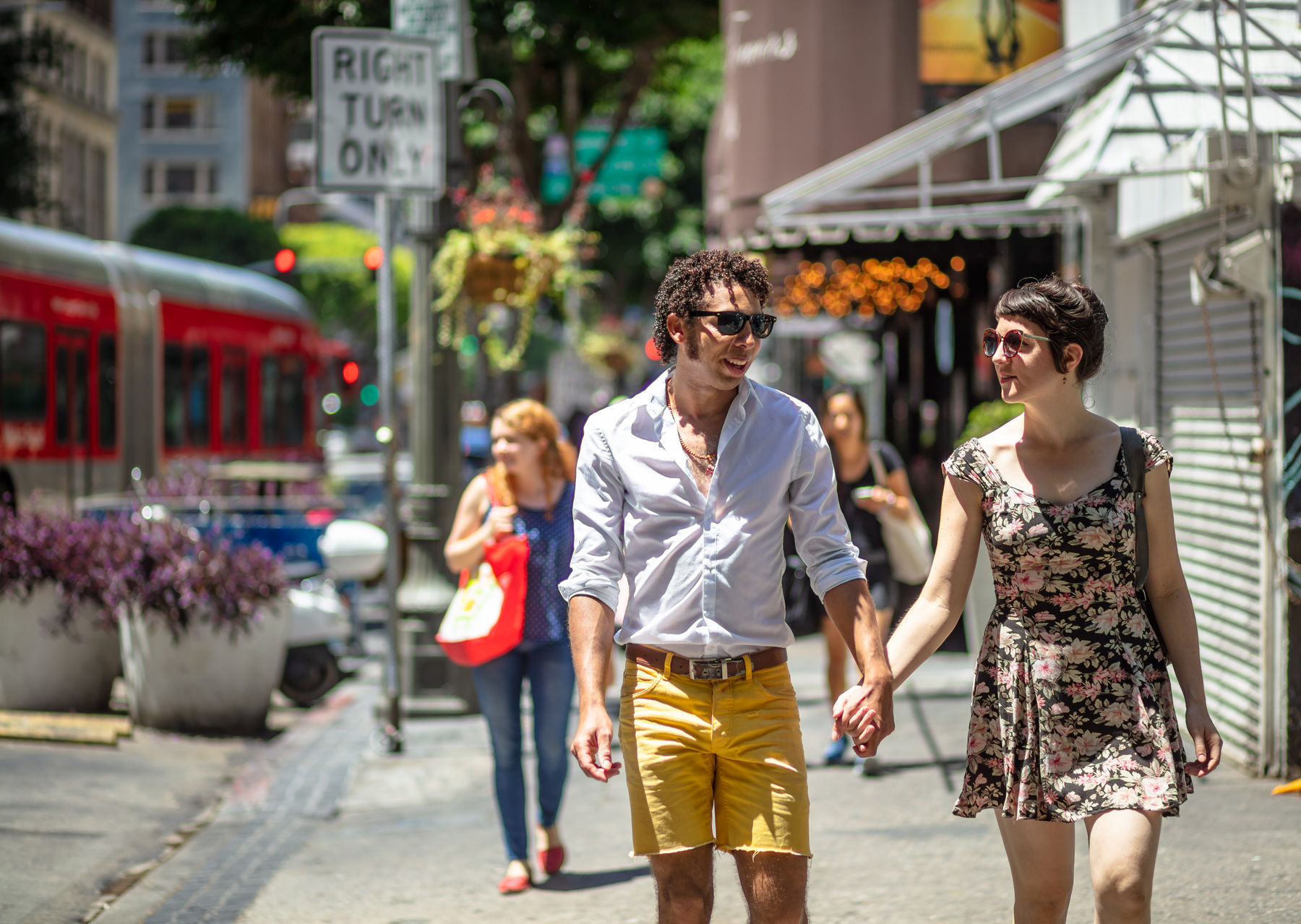Introduction
Downtown Los Angeles is at an important inflection point in its ongoing evolution, most immediately due to the catalytic impact of shifts in the nature of office work, but more broadly because of how it has grown and changed over the last 20 years, and what that means for the next 20.
This Downtown Renaissance, which transformed DTLA from a 9-to-5 business district to a 24/7 mixed-use destination, brought a wave of development that has accommodated an explosion in the residential population – from under 20,000 to over 90,000 – and tourism, with over 17 million annual visitors.
One of the crucial factors in DTLA’s continued success across all of its sectors – office, residential, retail, hospitality, arts & culture, dining and nightlife – will be how the public space they all share is adapted and improved to meet the changing needs and preferences of its increasingly varied population.

DTLA is a major commercial and economic hub, as well as a vibrant residential community, popular tourist destination, and important center of culture and government administration. Its public space is the connective tissue that bridges all these sectors and weaves them into a dynamic urban place.
In surveys conducted by the DCBID over the past decade, one of the most consistent findings is that people choose DTLA because they want an active urban lifestyle. A significant aspect of that lifestyle is the walkability that connects them with their community and all that Downtown has to offer.
While walkability is common to cities around the world, it is relatively unique for Los Angeles and one of the qualities that differentiates DTLA. It attracts residents, workers, and visitors, all of which support the restaurants, nightlife, and amenities that comprise the dynamic urban experience they desire. An active, attractive, and safe public realm is a critical component in a virtuous cycle of growth and improvement.
DTLA Facts
- 300,000+ Jobs
- 17+ million visitors in 2022
- 90,000 Residents
- 184 Food/Beverage Businesses Per Square Mile
- 93 Average Walkscore (vs. 69 for City of LA)
Maximizing the value of the public realm requires leveraging all the elements that contribute to it and enhancing the connections between them. This begins with design and extends through maintenance and programming, all of which falls under the realm of placemaking.
Placemaking is about creating, improving, and activating spaces with people in mind. Successful placemaking requires the resources, effort, and attention of a range of groups, organizations, and agencies, as well as a community of engaged residents, businesses, and property owners.
Many of the most successful placemaking strategies are relatively inexpensive, especially in terms of the value they can provide. Failing to make these kinds of investments brings the risk of losing much of what fuels the energy and vitality of DTLA.